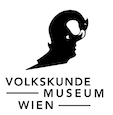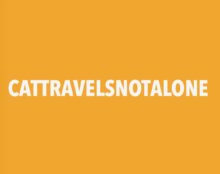The choreographic assemblage r i v e r h o o d, #Wienfluss combines a performance & installation, a reading & concert, as well as a choreographic walk along the riverside. Each of these parts can also be activated and experienced independently.
The term ‘r i v e r h o o d’ is an almost forgotten concept from the mid-19th century: ‘the state of being a river’ (Oxford Dictionary). It expresses how different cultures (formal and popular) imagine, define, build, and live with rivers as socio-natural systems. Rivers as part of society and vice versa.
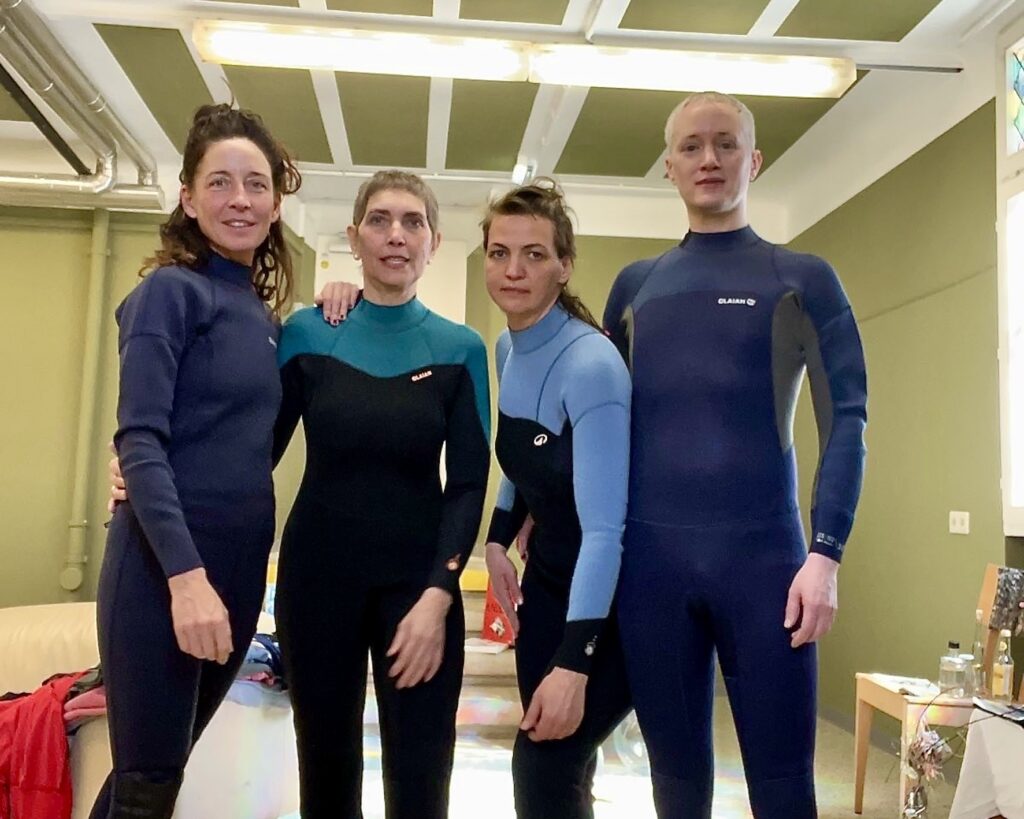
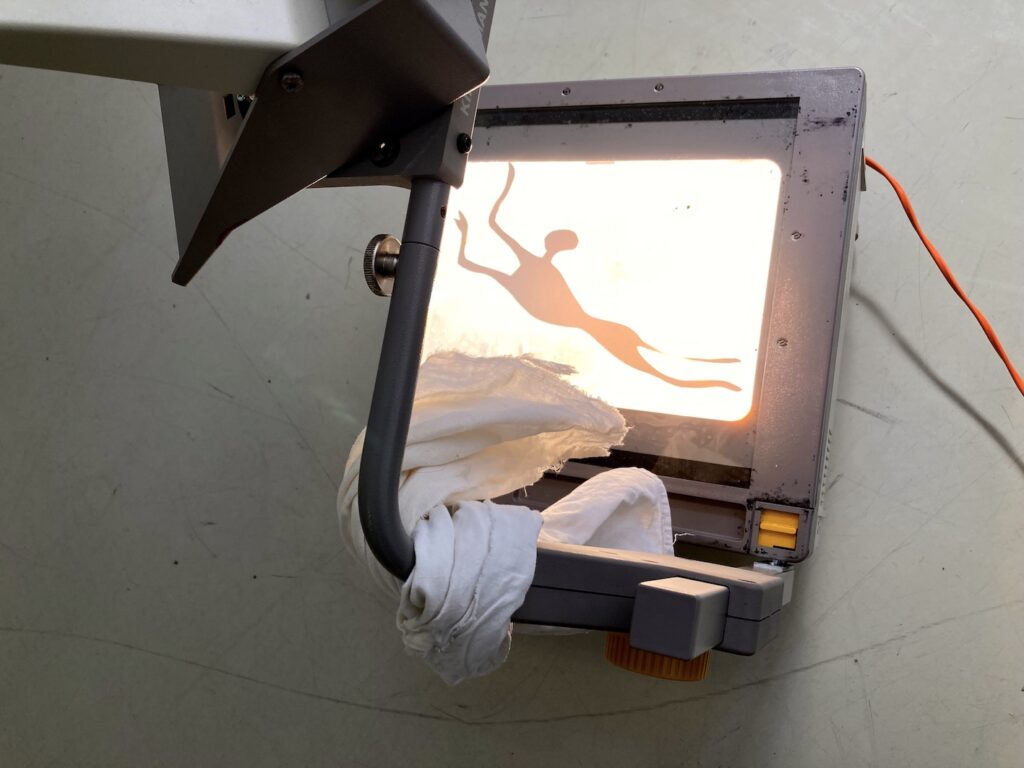
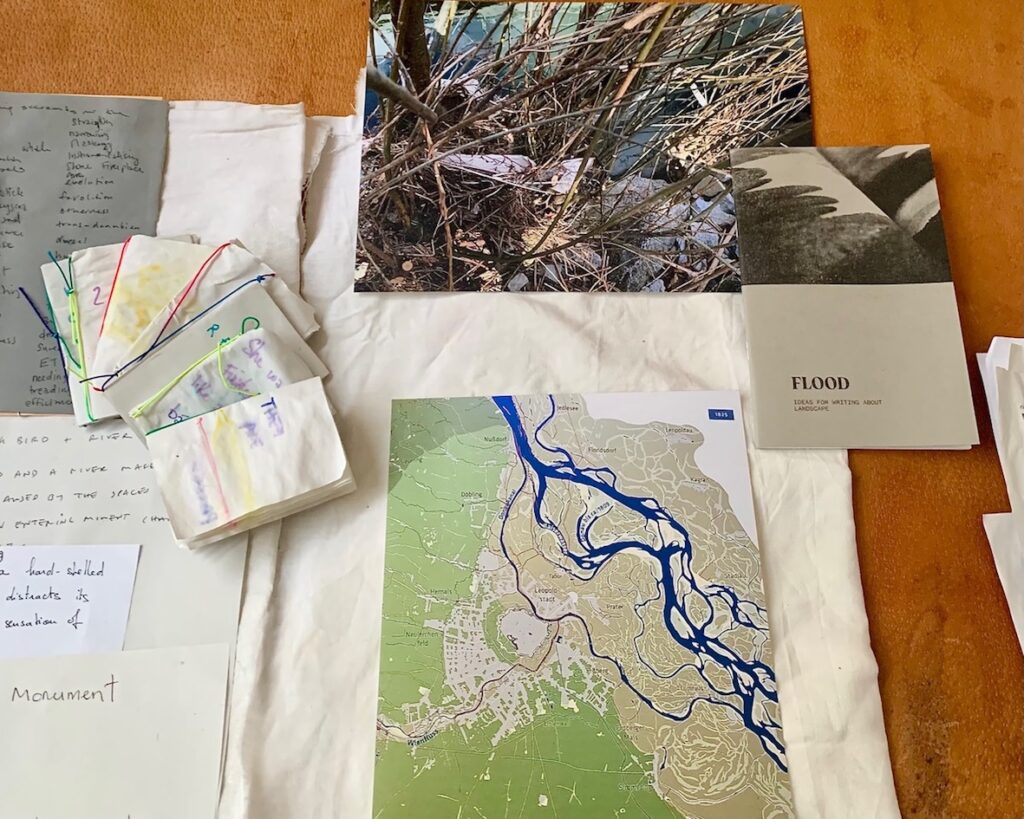
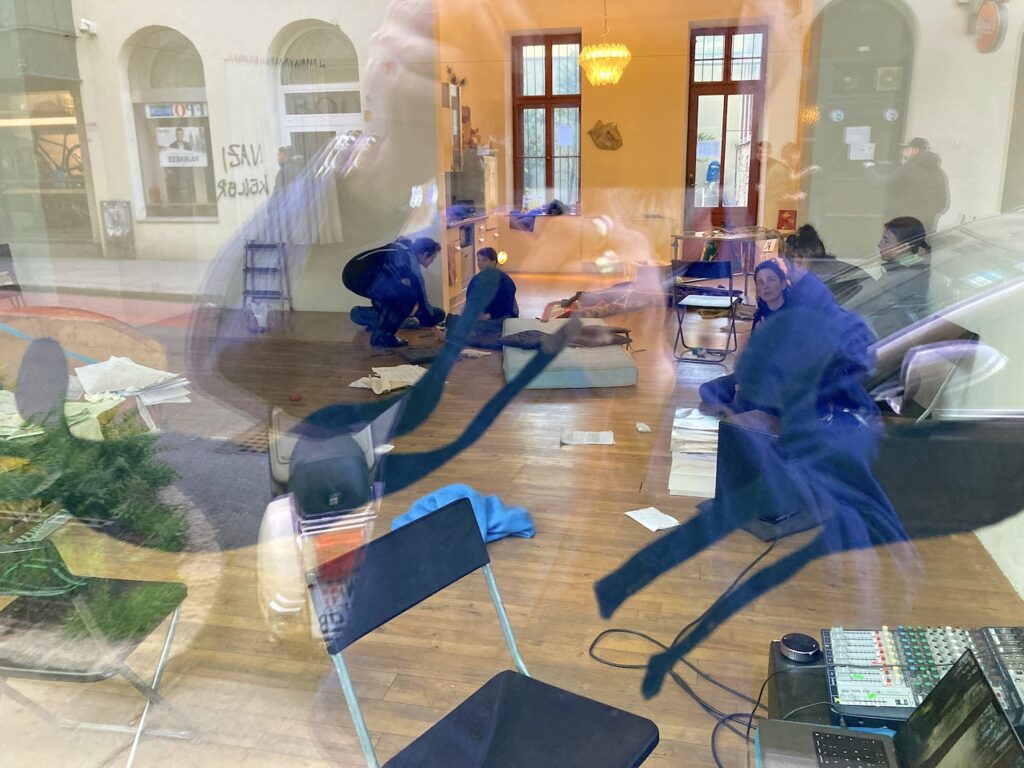
Alix Eynaudi, Sabina Holzer, Agnes Schneidewind, Oisín Ó Manacháin|Oisín Monaghan, Jack Hauser and the Wienfluss.
As lovers, neighbours, children, friends, parents, collaborators, and other kinds of connective beings, nine artists share their concerns and imaginations for the condition of the world by thinking with rivers. Their shared artistic practices will move the public through a choreographic assemblage in forms of installation, performance, concert & reading and a walk to open up to these collective reflections:
We turn to the Vienna River and the geological conditions of the 15th district and follow the extended riverbed and streams through time. By turning to one river, we connect with all the other rivers. The rivers and their waters are veins: in our bodies, in the landscape. They are vulnerable, endangered habitats. The Wienfluss was flooded some months ago, in autumn 2024. We are also flooded. Swept away into a flowing oblivion. How we were. How we will be. How we could be. We invite bringing the attention on the everydayness of our senses and dances.
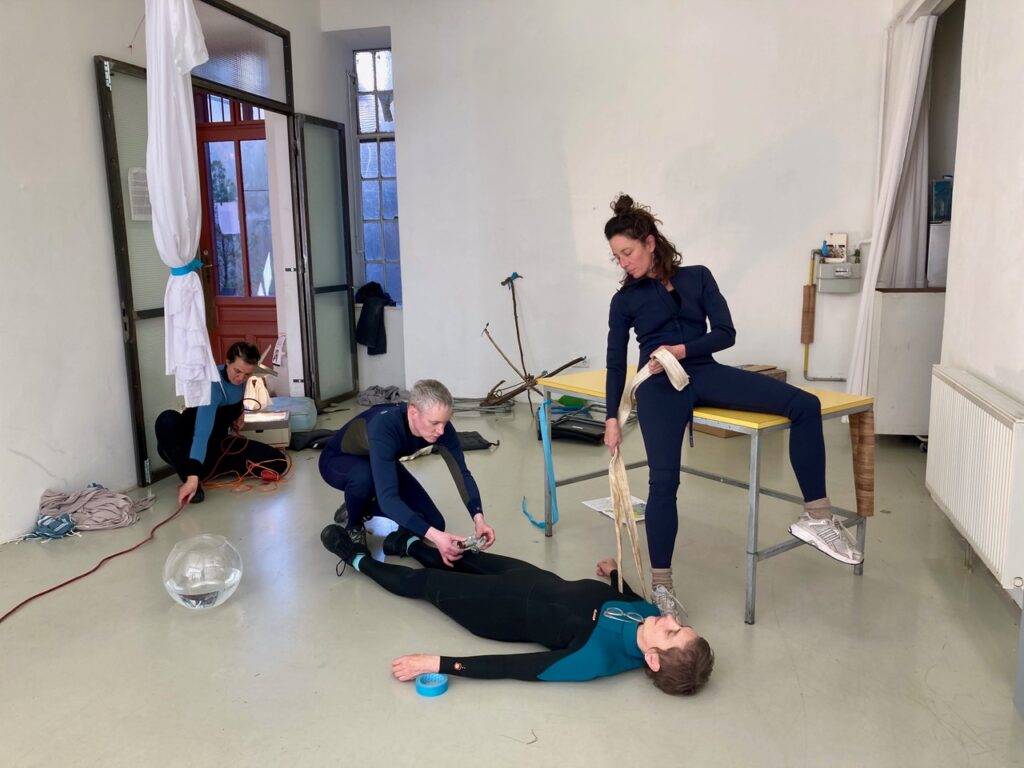
Photo: Jack Hauser
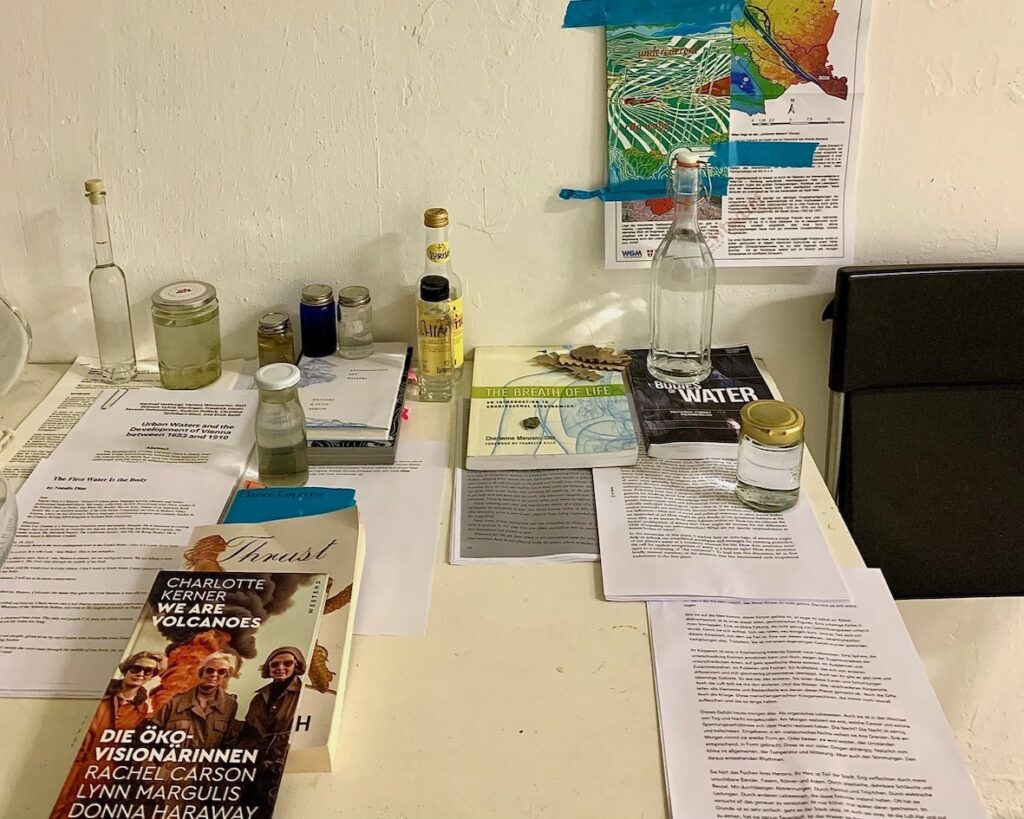
Photo: Jack Hauser
r i v e r h o o d ~ the performance, is composed of 3 vignettes and 3 tributaries. Vignettes {inspired by Jim Enote, a traditional Zuni farmer and director of the A:shiwi A:wan Museum and Heritage Center} are anecdotes that are aesthetically condensed and can be seen as situational narratives, which, generated in an experiential research attitude, embody learning experiences and make them physically perceptible. Here Vignettes are dances embodied knowledge of water. Tributaries are social activations of the materials in space: habitats {Dolly Jørgensen, Artifacts and Habitats} we brought from the river, texts (scientific and other essays, poems), dances, sounds. They are facilitated and addressed in direct connection with the visitors. They engage of collecting stories and an exchange of experiences related with rivers.
Again and again we listen to the river. We hear its song. The water carries memories. Of the land, of time. We touch the edges and are touched by them. Flushed by rivers, we want to learn from the water. From the flow. The waves. The horizontal and vertical branches. The transitions, the living, from those who passed away. Witnessing water roots growing on soaked surfaces through touch, we braid dances and words. Our bodies do not belong to us, they are intertwined, part of each other and the living space. We practice cultivating what we have in common and what is different. We practice trust. Tributaries that we are, we come together from our native river land, bringing our gifts and boulders to share, to celebrate and dream. Often on the threshold, lingering, leaking, moving, being moved, waving, whispering, weeping; full of desires, memories, hopes, and gratitude. In the midst of how crazy we make this world, we connect, practice, and invite a community to come.
Jack Hauser composed 3 video-poems.
Click to watch the 1st vignette: a day with riverhood
Click to watch the 2nd vignette: mourning & treatments of repair
Click to watch the 3rd vignette plus tributary: remembering & futuring
Choreographic Assemblage: r i v e r h o o d
We began with water. Not just as an element, but as memory, as body, as a space of possibility, difference and critical reflection. The Wienfluss became our point of departure, our resonant space. Each of us brought our artistic practice into the process — as movement, as language, as text, as sound. We then let our habits dissolve, leak, circulate, reshape.
The gestures and movements that emerged from our shared practice dove into the physical and sensorial traces that water leaves within us — and into what we imagine, project, and speculate into bodies of water. We accepted invitations from words like: barnacle, carrying, corner-crying, cascade of words & voices, book-washing, tripputaries, tidal offerings. A vocabulary that moved through us — through the body, through conversations, improvisations, and silences. Throughout the process, we collected thoughts, gestures, texts, names. We layered them — sometimes contradicting, sometimes coordinated. With these fragments, we recreated our riverbed at Kunstraum eindorf as a choreography in radical intra-dependence with space, time and visitors.
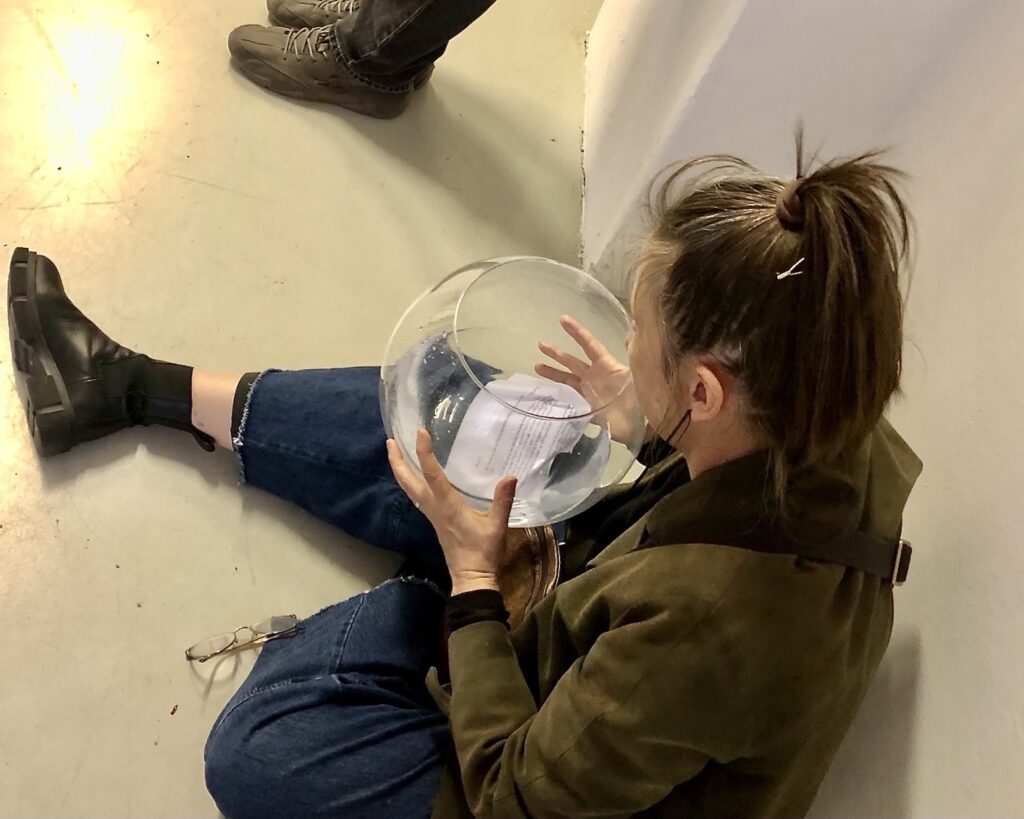

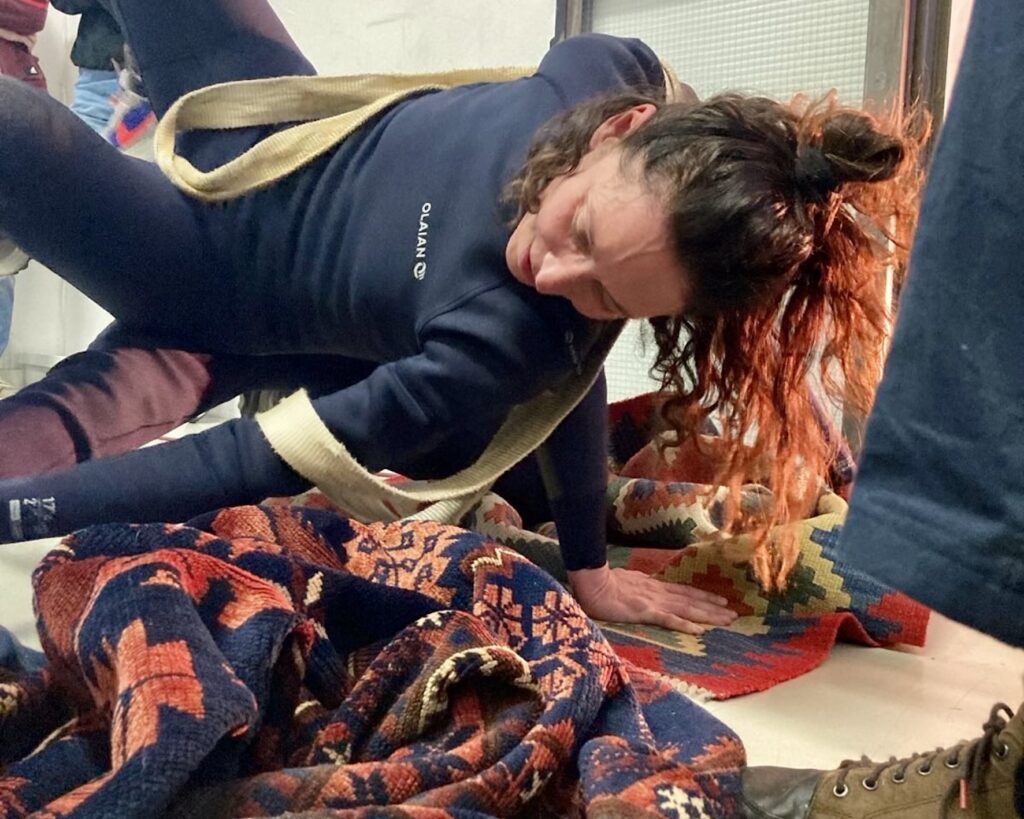
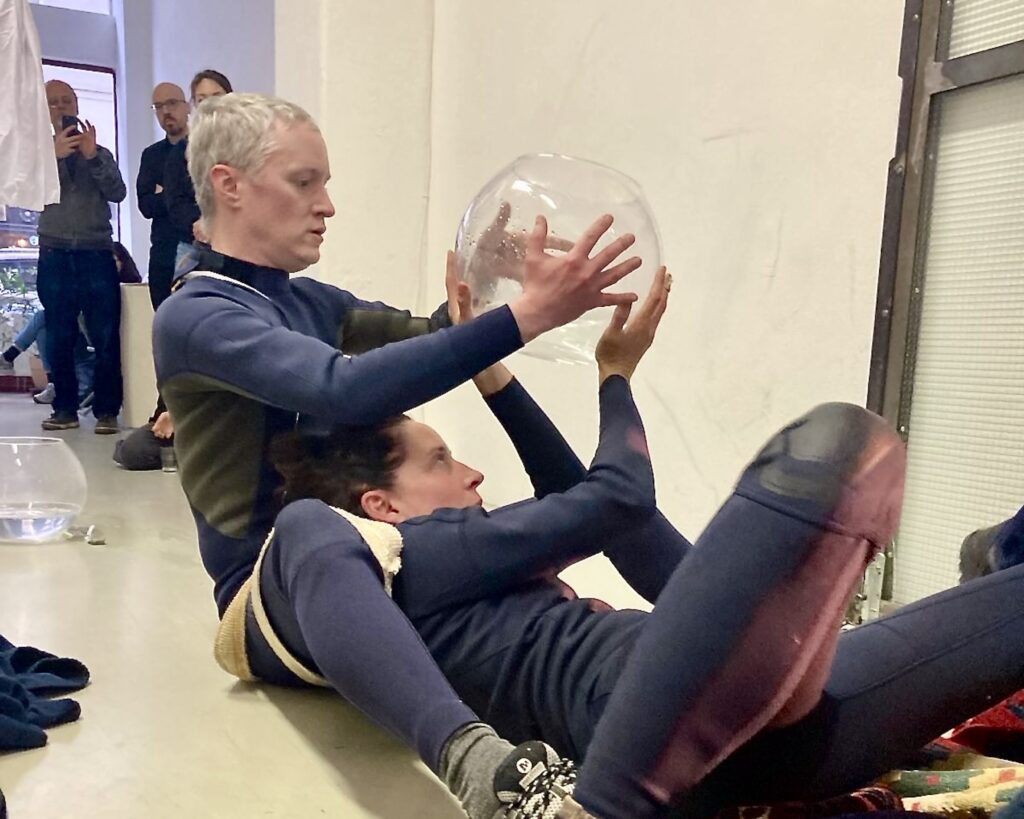
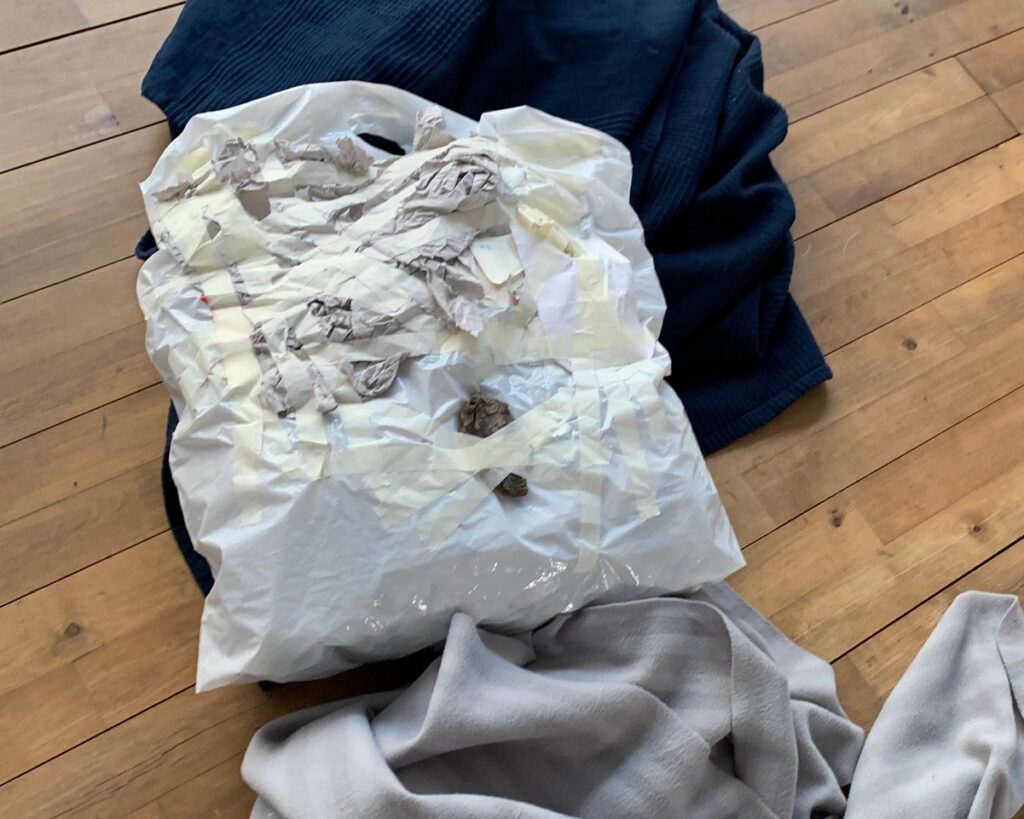
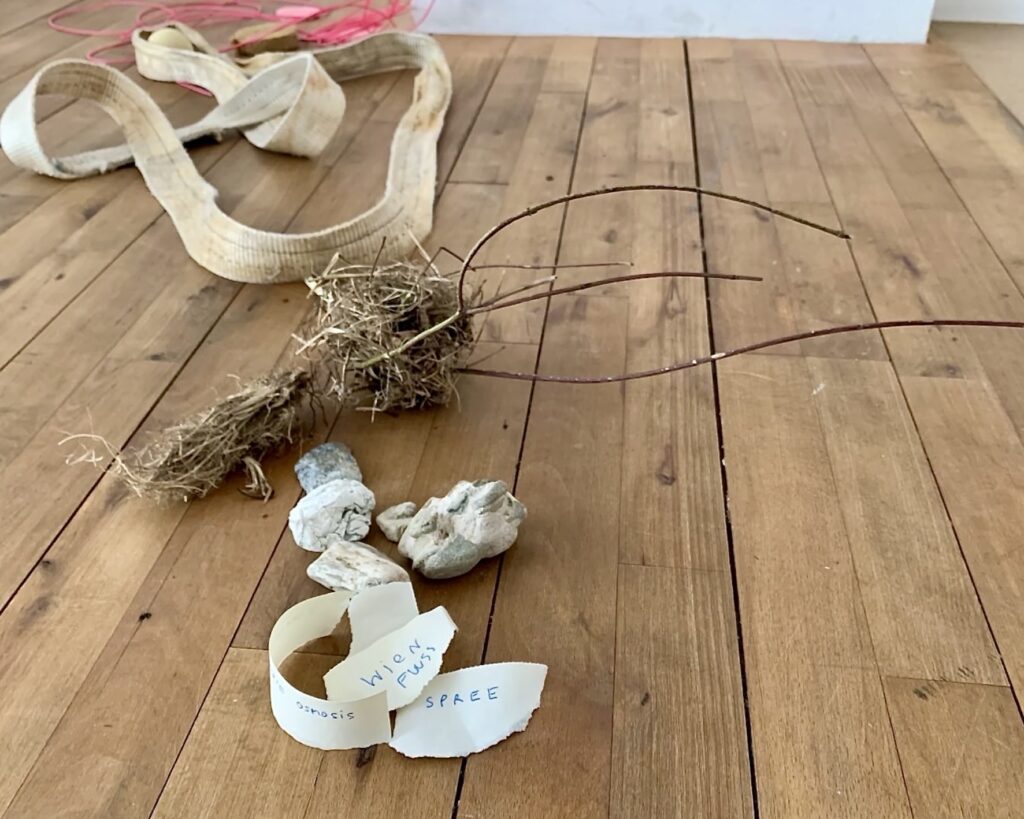
… Kunstraum eindorf acted as a porous space that established, as a sort of baseline for everything and anything that was to follow, a radical equality of attention.
What emerged during the performance was perhaps a spatial choreography of temporary islands and huddles being formed with human and non-human bodies, huddles of people chatting over a map of river currents, talking about ecology, politics, and memories of the rivers and streams in Vienna; brief duos of bodies carrying each other, lifting each other up and holding each other, bumping into each other, connecting via their feet. Perhaps a better word than islands or huddles is puddles, if that metaphor is allowed, and sticking with obvious metaphors, the dramaturgy followed a sort of coming and going that might perhaps best be approximated with the tides – although strictly speaking it’s a crooked metaphor as it associates the sea, not the river. Movement phrases, words read out loud, they would establish contact with me similar to how the waves hit the shore, and similarly pulling back again, only for the next wave of sensuous contact to gently approach me. A performer would sit down beside me, start reading from a book, only to lower their voice more and more until I could barely hear them, in a movement similar to how a wave might be reabsorbed by the motions of the sea.
These choreographic elements and moments acted as micro-events, perhaps micro-forms, that emerged from the immanence of this porous space and retreated back into it. In some ways, us human bodies were just like the objects in the space – being moved by a human tides and washed up on the coast side, so to say, or indeed in the corners of the space, as much as in its centers.
The space, then, might also have served as a material and physical cartography, rather a topography of a choreographic movement of swelling and fading. Additionally, the overall dramaturgy moved back and forth between performance and pause, although the two phases were not strictly separated but rather faded into each other; one did not overpower the other… (Note by Georg Döcker)
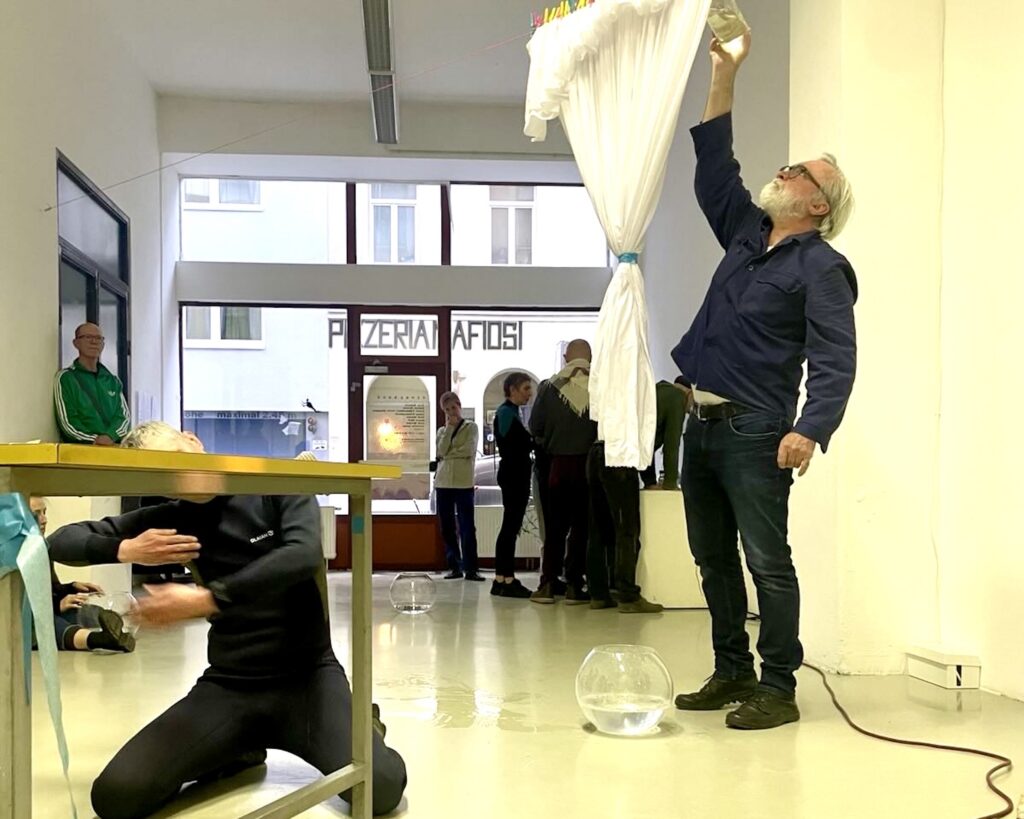
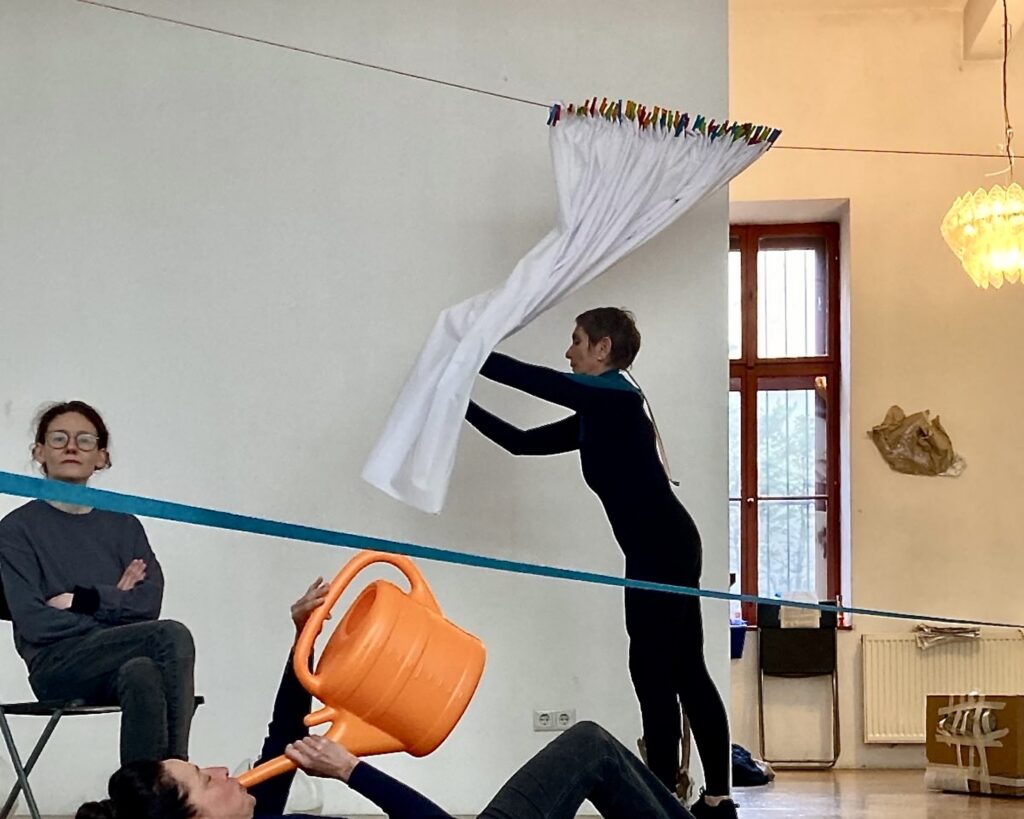
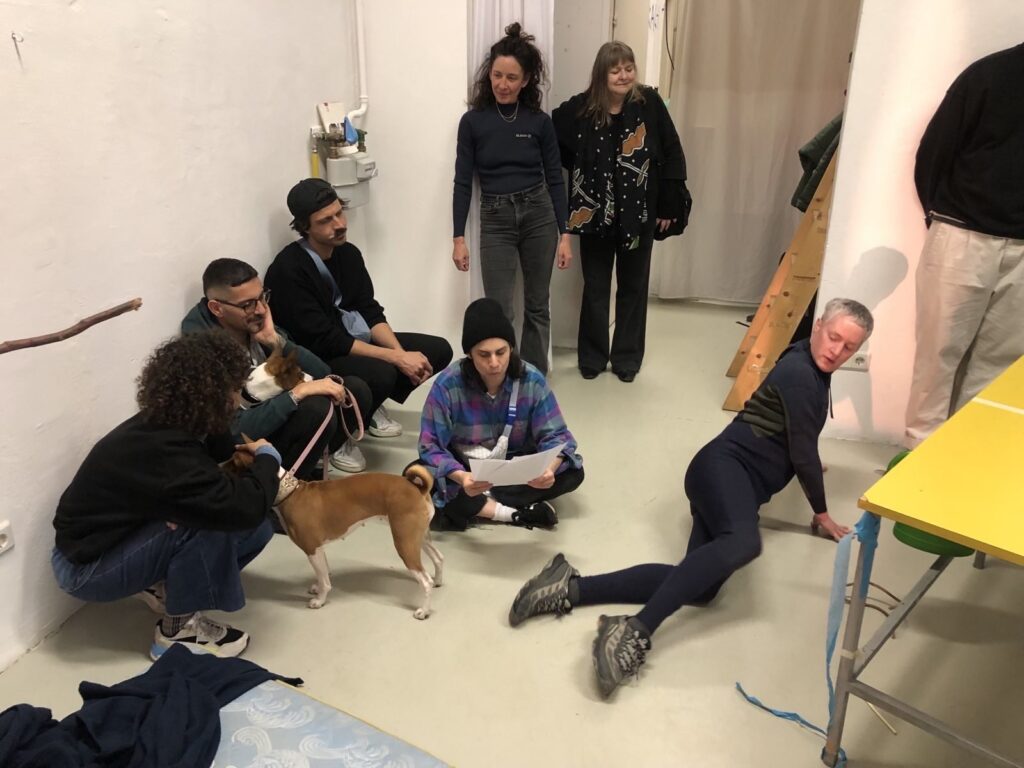
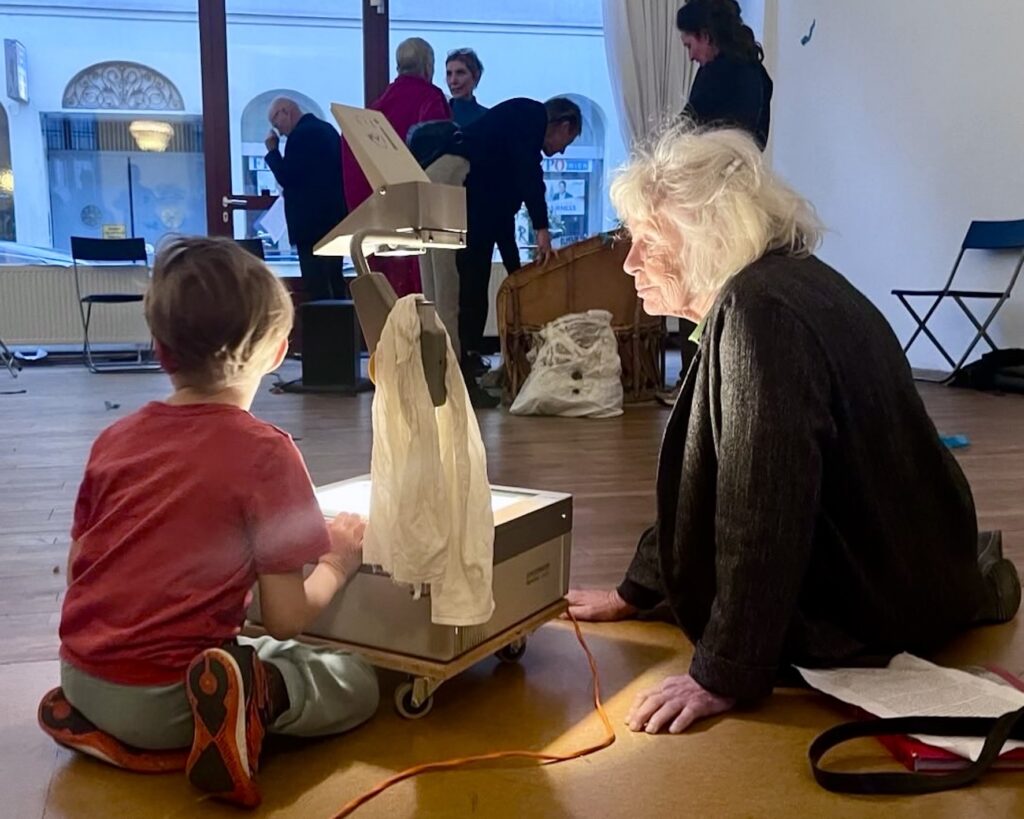
Photos by the artists
Choreographic Assemblage: r i v e r h o o d
We exercise to treat materials not merely as objects to be pushed around for our own satisfaction, but as habitats (Dolly Jørgensen)—as companions who accompany and support our movements and thoughts. They walk with us, through riverside paths and daily practices, shaping our understanding of the environment.
These materials become small yet significant treasures, deeply tied to our emotions and sensations.
Jack Hauser re-activated his interpretation of Nasse Wäsche by Joseph Beuys—an artwork that calls for care and attentiveness. We sought to invite all kinds of materials into our gestures and dances, to truly listen to them: relating and co-sensing in a mode of radical tenderness (Dani d’Emilia). Movements and atmospheres guided us—telling us where and how to place these elements as traces of the time we shared.
Some constellations carried a sense of structural permanence; others remained fluid, part of an ongoing generative flow.
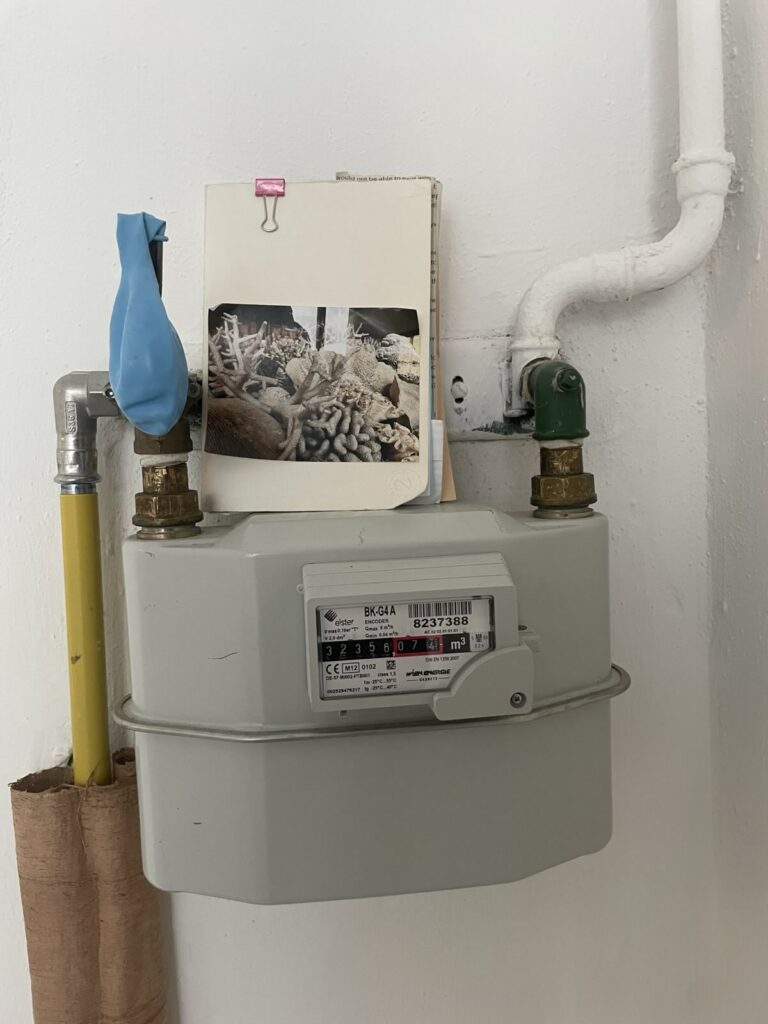
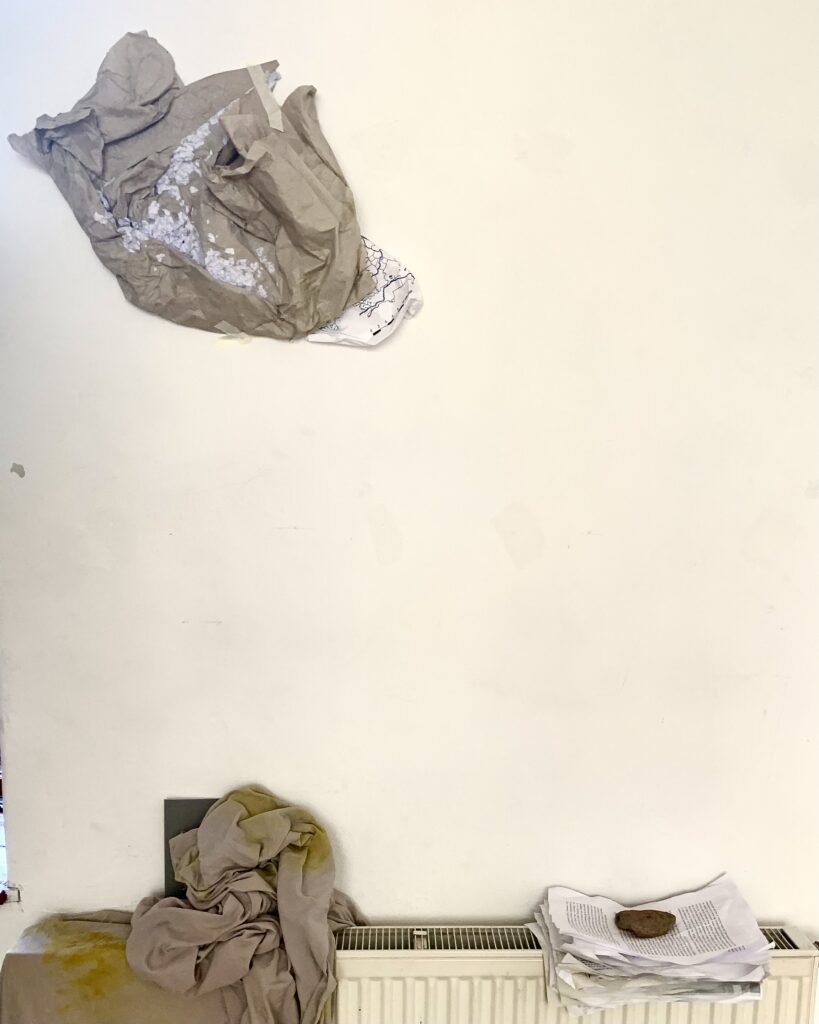
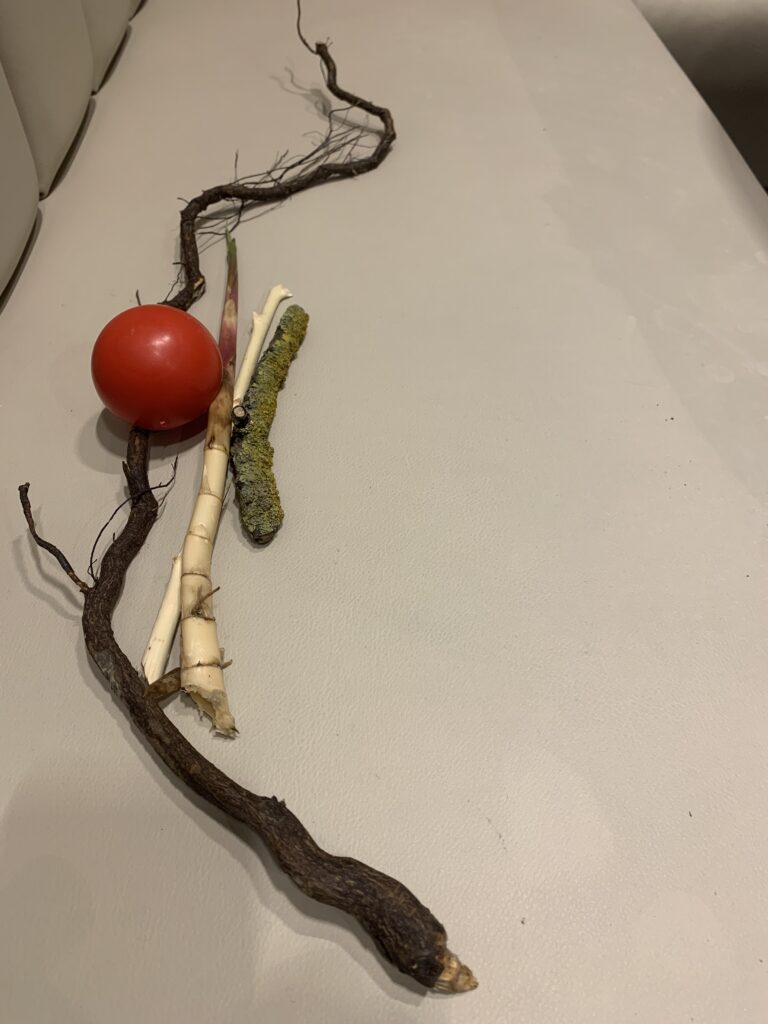
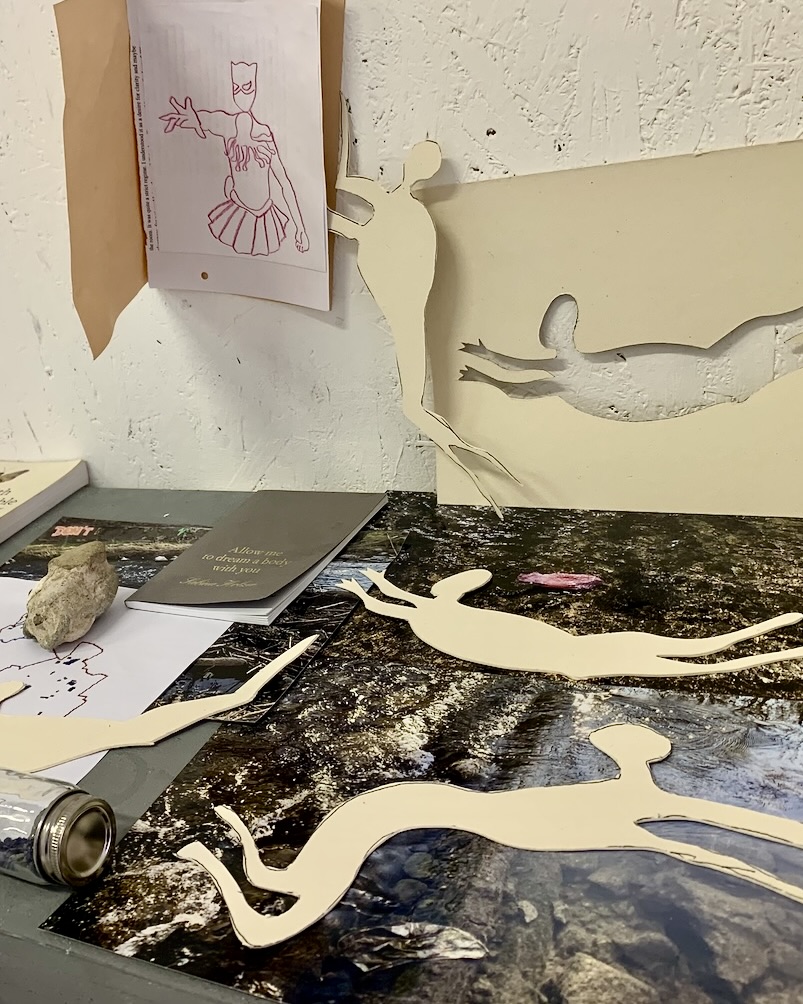
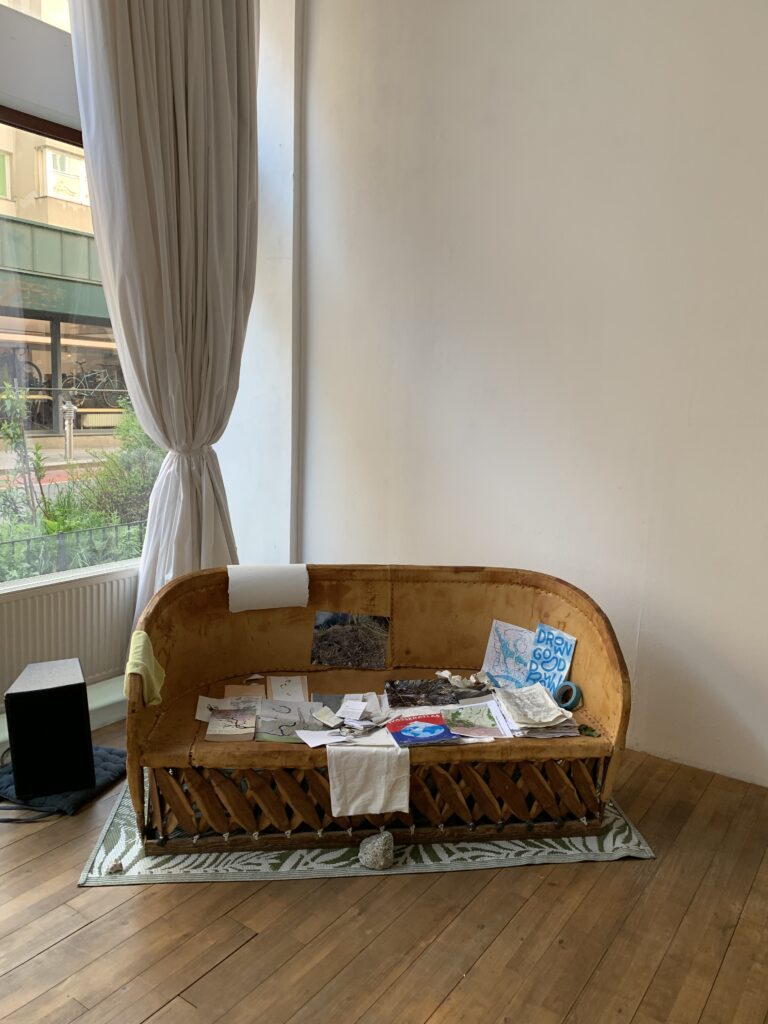
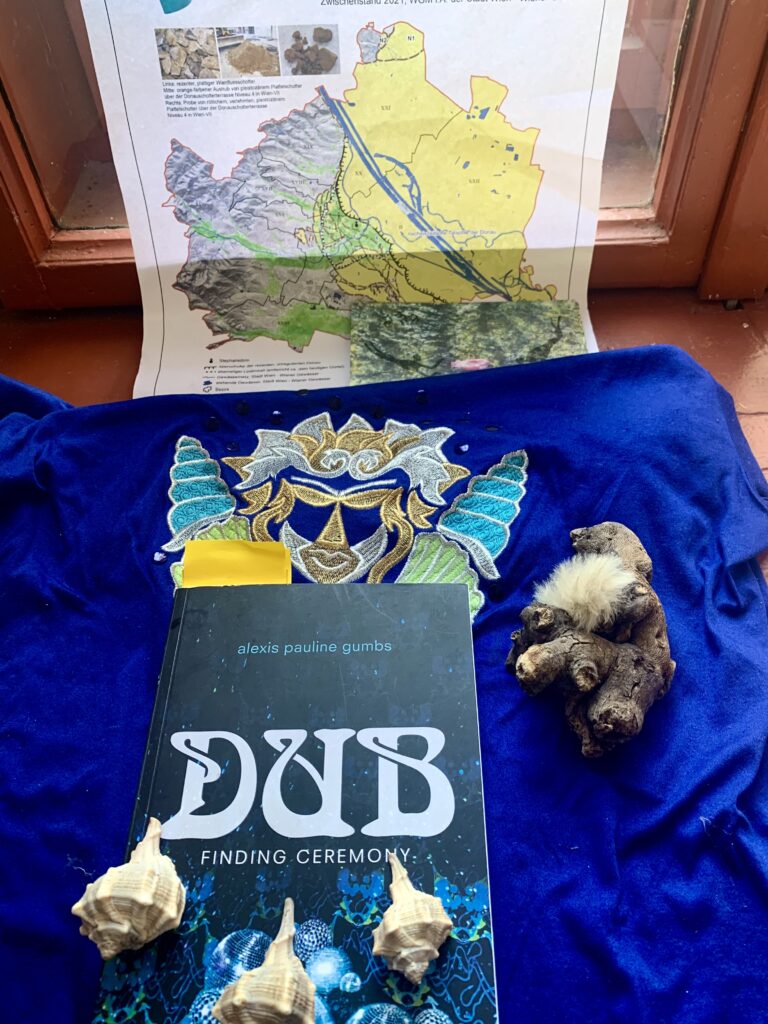
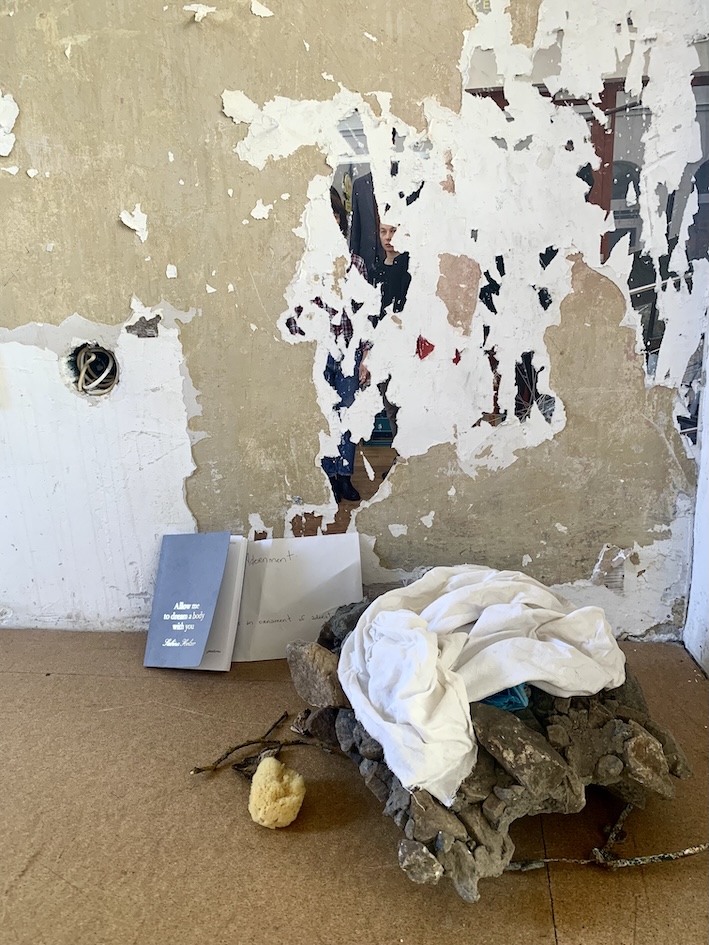
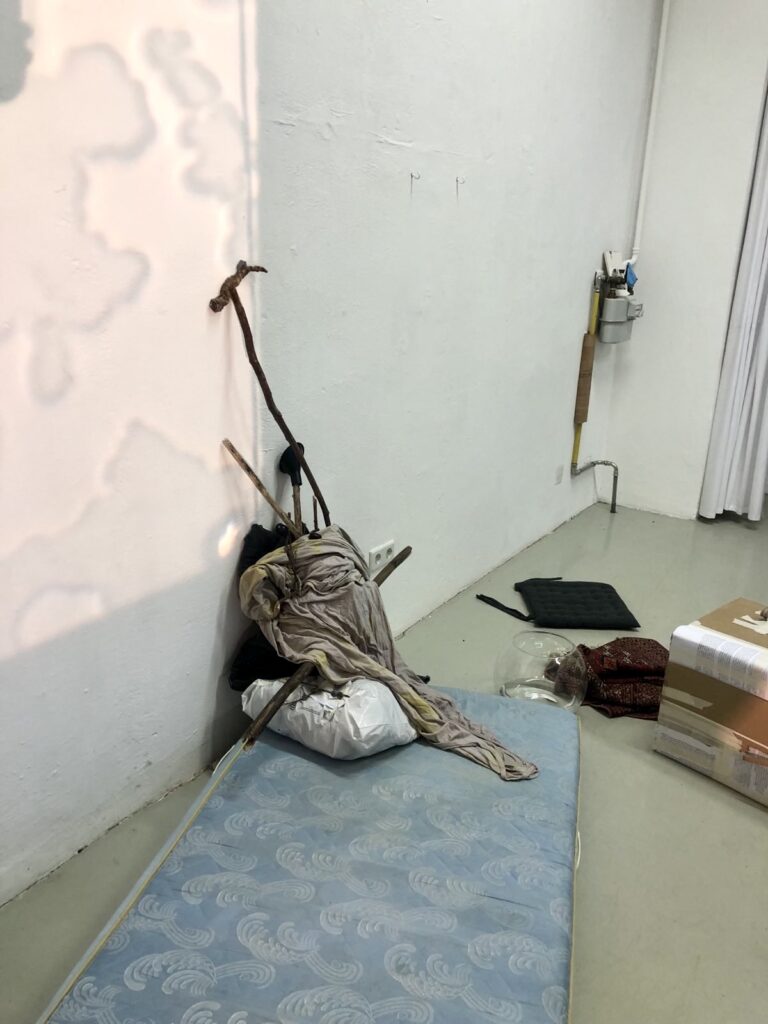
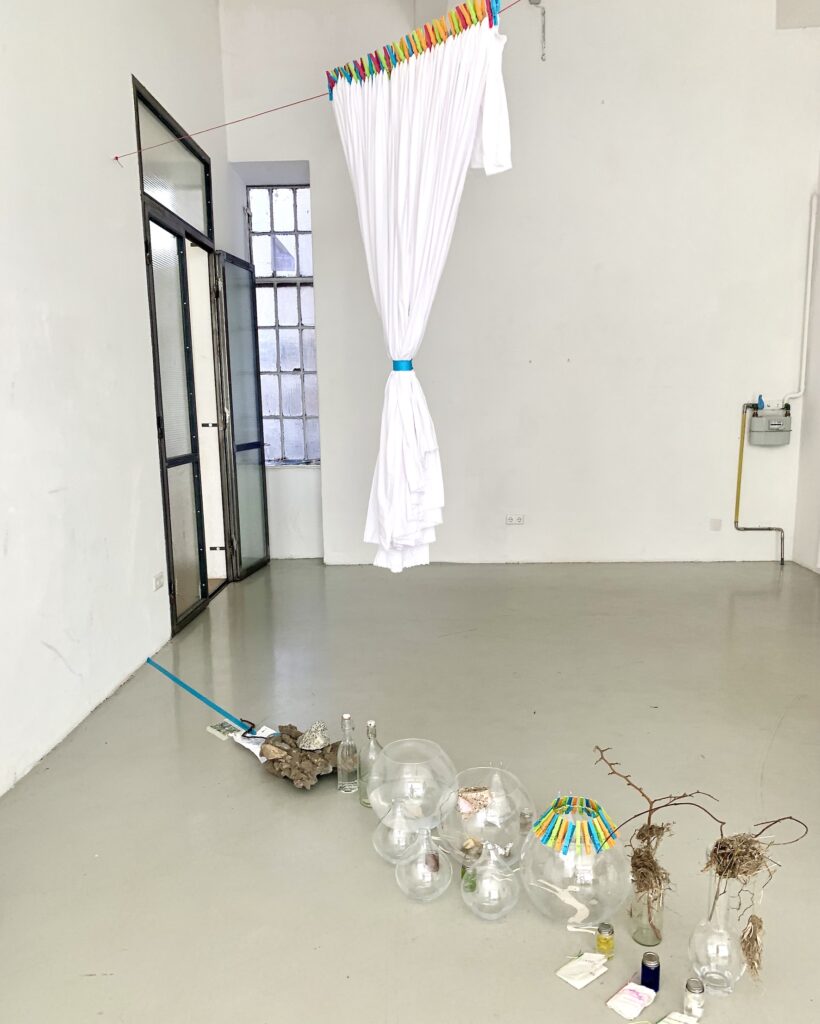
Anne Fauchret: … How to end instrumentalist relations to rivers? How to listen to rivers? How to look at rivers under the surface? How to re-imagine our relation to rivers? Or rather: How to think like a river? How to become a river? riverhood works as a polyphonic, synaesthetic and choreographic assemblage, always reconfiguring itself. riverhood creates scenarios gathering diverse human and more-than-human bodies and forces, stories and knowledge, practices and rituals. riverhood encourages the reclaiming of being otherwise, the building of new collectives, the forging of new connections, ways of future cohabitation. riverhood is a practice, an ethics, a po(i)etics offering ways to de-petrify and casting counterspells to outward the fear of ontological inseparation. … [to read the whole text, click: „To conspire with the river“]
Come here, dust and hair # r i v e r h o o d
Concert & Reading
Sound: Boris Hauf
Text: Litó Walkey
Boris Hauf generated sound sculptures through field recordings of the Wienfluss. They became part of the performances, and he expended them in a concert. Litó Walkey immersed herself in the script of the walks, unfolding them into fluid narratives—water stories that invoked river-bodies of all kinds, weaving them into the poetry of rivers.
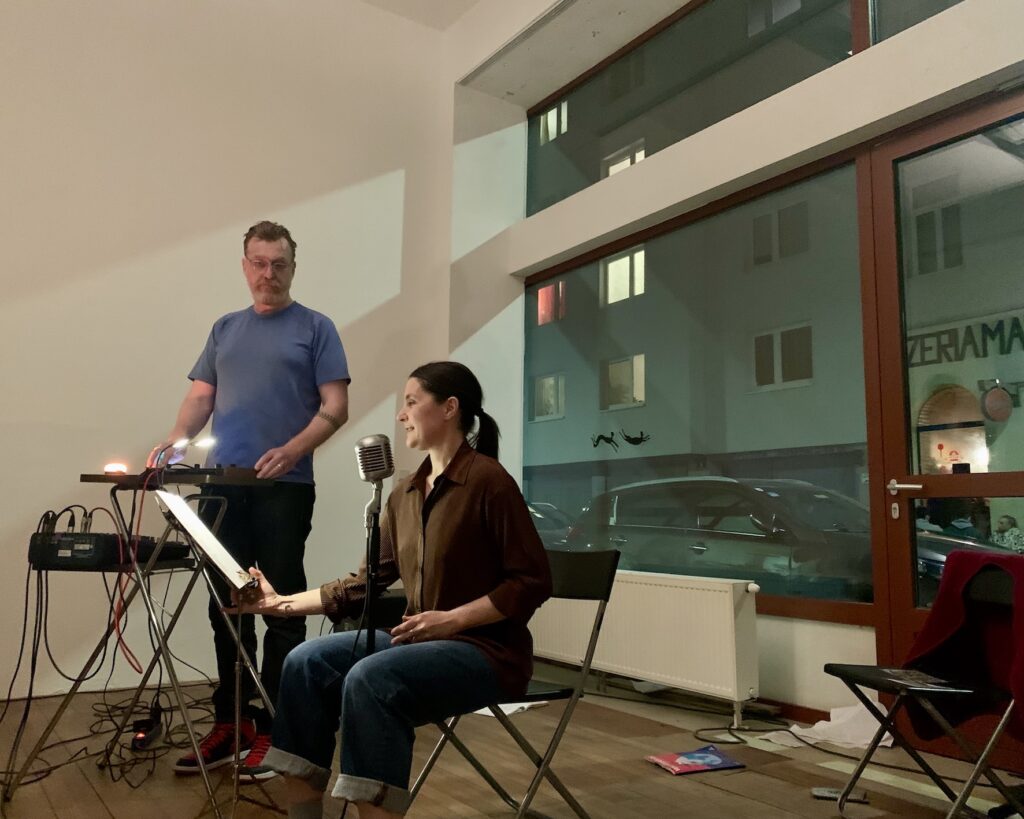
Photo: Sabina Holzer
Read the text by Litó Walkey here: Wienfluss stories & POEM
Sabina Holzer (conception)
Wienfluss (script)
Alix Eynaudi, Sabina Holzer, Oisín Ó Manacháin|Oisín Monaghan, Agnes Schneidewind (choreography, performance, walks)
Jack Hauser (expanded cinematographer)
Christina Gruber (hydrological counselling, walks)
Litó Walkey (writing companion & reading)
Boris Hauf (composition & sound)
mollusca productions (production management)
With heartfelt thanks to: Sabine Grupe, who so generously made her knowledge and expertise available, Martin Wieser for his support during the rehearsals and all the participants in the Artist in Residencies: Tom Klien, Kilian Jörg, Cornelia Scheuer and workshop participants. Herbert Justnik for the year long inspiring and supportive dialogues.
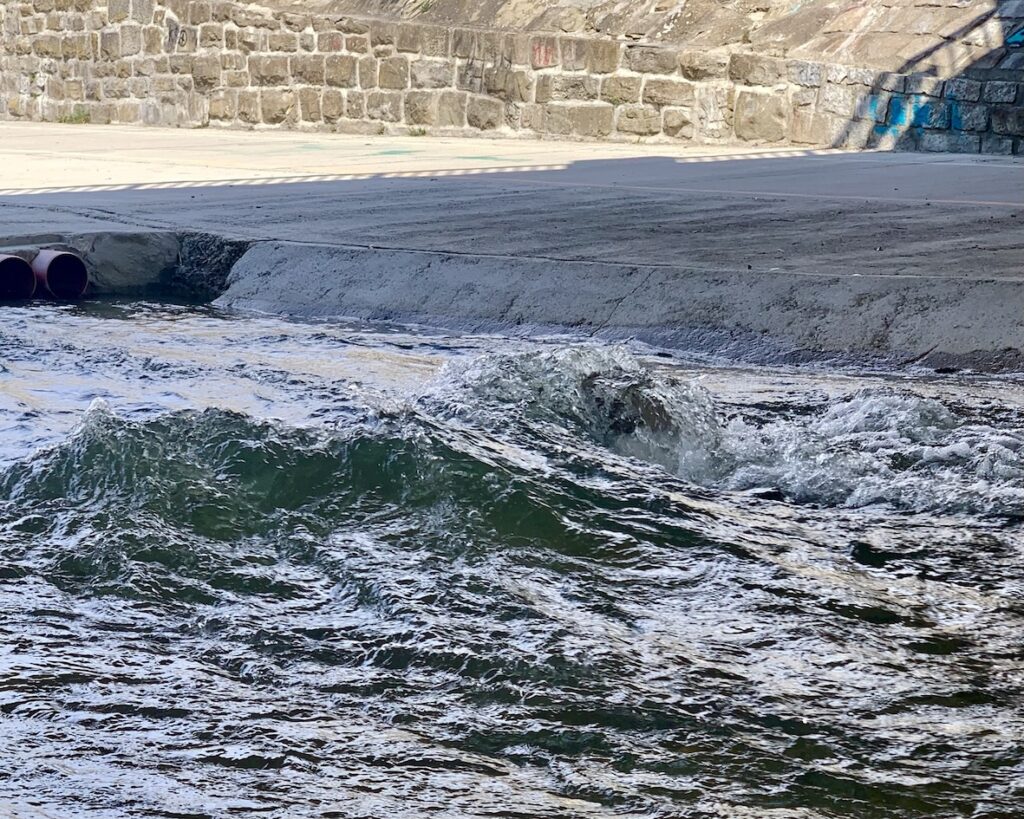
Photo: Sabina Holzer
Conceived & organized by Sabina Holzer – cattravelsnotalone
Cooperation: Kunstraum eindorf and Volkskundemuseum, Wien.
Funded by the Cultural Department of the City of Vienna and the Cultural Commission of Rudolfsheim-Fünfhaus.
A project by cattravelsnotalone.
Sabina Holzer has been designing and facilitating workshops & artistic research settings on the human body, water and urban landscapes since 2021. Under the name Liquid Journey she has visited with her practice the Volkskundemuseum, Tanzquartier, dieAngewandte and ImPulsTanz in Vienna. In 2021, she received a working grant from the City of Vienna for her artistic research, for Fluvial, which gave her the possibility to meet other artists and scientists walking and exploring the river sites and underground waters of Vienna.
WITH
Alix Eynaudi, choreographer and dancer, lives in Vienna. Her works are shown internationally and are located in the field of extended choreography. www.alixeynaudi.com
Christina Gruber, freshwater ecologist and artist, works at the interface of art, science and technology. www.christinagruber.net
Boris Hauf, musician and composer, curator. Works in the field of performance and dance, as well as numerous albums and, since 2015, his own label. www.hauf.klingt.org
Jack Hauser, former filmmaker, performer, scenographer, claparatist, who has been exhibiting, presenting, designing, planning and supervising conceptual visual works with various materials and media as ‘Wohnung Miryam van Doren’ with friends since 1999.
https://www.cattravelsnotalone.at/jack-hauser/
Sabina Holzer, choreographer, dancer and writer. Her performances and texts explore the ecologies of human and more-than-human bodies with a particular focus on movement. www.cattravelsnotalone.at
Oisín Ó Manacháin|Oisín Monaghan is a dance artist and visual performer/creative currently based in Vienna. He works with numerous international artists for theatres, galleries and public spaces.
Agnes Schneidewind, lives and works in Vienna. Based on somatic body and dream practices, she works with dance, text and visual media. sjnijdewindt.works
Litó Walkey, lives in Berlin and explores non-hegemonic strategies through performance, writing and choreography. Her artistic practice seeks forms of relationships, responsibility and responsiveness.
https://litowalkey.org
Wienfluss, a river and desire of childhood, which means future. A silver river in a bed of stones, that are currently surrounded by green plants. It is the home of the amazing green algae snake. Although the river also flows through urban areas, it has an alpine character and is considered torrent white water.

